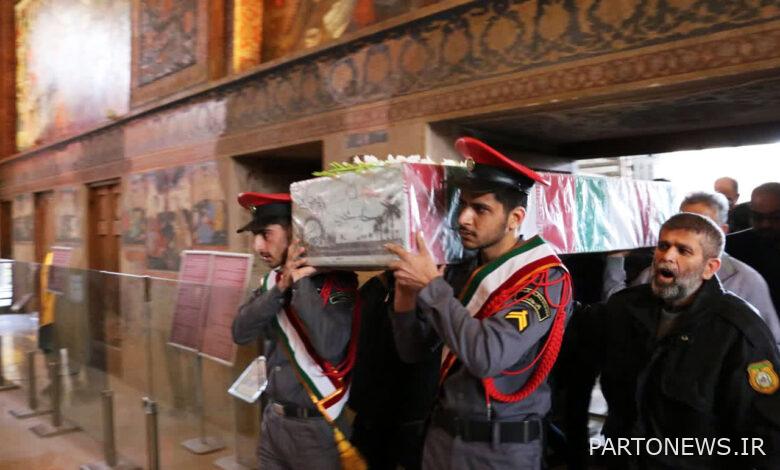The burial of the body of the unknown martyr in the world complex of Chehelston, Isfahan, an experience with the breadth of history

Saeed Ahmadi, a media activist, wrote in a note: Undoubtedly, whenever memories of the days of imposed war and the era of holy defense come to mind, the name of Isfahan comes alive along with them in everyone’s mind, and then we remember the words of Imam Rahel, who said, “Where in the world is the city?” You can find it like in Isfahan.
Whenever the talk of the front and war and sending young and old to the front to defend the water and soil of the homeland, rituals and beliefs, Isfahan’s name was always at the top of the list of dispatches and even people’s aid.
The main center of these gatherings was undoubtedly the world complex of Imam (RA) Square (Naqsh Jahan) as the central square of the city and the historical bridges of Isfahan, especially the historical bridges of Siusepol and Khajo.
The historical square of Imam (RA) (Naqsh Jahan) with more than 85 thousand square meters of area has been the main manifestation of the social and cultural life of the people of Isfahan during the day and even at night for more than 400 years, so this huge complex could not be part of this great social transformation, i.e. The days of holy defense should not be wasted, therefore, in the memories of many veterans and elders, the important social and cultural events related to the days of war that took place in this huge field will never be erased from their memories.
One of the most important events that took place in this huge historical complex, especially the Aali Qapo Palace, was the funeral rites of the pure bodies of martyrs who were sent from this heroic region to the fronts of the war between right and wrong.
The most important event that this huge historical square witnessed during its 400-year life was the burial of the pure bodies of the martyrs of Isfahan in the Muharram operation in 1361. Reports indicate that in this massive operation, more than 700 square kilometers of the homeland were liberated by the fighters, and even some areas of Iraq were captured by the fighters. In the memoirs of elders and reports, the responsible institutions were mentioned.
In this huge operation, the people of Isfahan had sacrificed more than 700 martyrs for the country and the revolution, however, the headquarters of organizing the funeral ceremony of the pure bodies of these martyrs decided to bury the martyrs in two occasions. The surviving pictures show that the great square had a special atmosphere that day, and the main hall of Aali Qapo Palace also received the pure bodies of these martyrs. On the 25th of Aban 1361, the bodies of 350 martyrs were left one by one from the place of Ali Qapo Hall, and then they were buried on the hands of the roaring waves of the people who had gathered in the large square, and moved to the ascension of the martyrs.
Since then and until the end of the imposed war, Aali Qapo Palace and Naqsh Jahan Square witnessed the ups and downs of this nation time and time again, including the sending of soldiers to the front, including the famous army of Muhammad (PBUH), the sending of people’s aid to the front, and the martyrs.
With the end of the imposed war, many of these events were etched in memories. However, after 35 years since the end of the days of holy defense, maybe the young Iranian generation had less opportunity to get acquainted with the bravery of the previous generations, at least in the field of historical monuments.
In December of this year and at the same time as the caravan of the people of Behesht, which included the last batch of newly identified martyrs, the bodies of 12 unknown martyrs were buried in different scientific, administrative and cultural centers of Isfahan.
At the suggestion of the officials of the General Administration and the approval of the officials of the Foundation for the Preservation of Sacred Defense Values, the holy body of one of the unknown martyrs was one of the guests of the world complex of Chehelston Palace on a rainy autumn morning for a few moments, due to being in the second stage of the foreign tourism season as well as several days of vacations. During the days of martyrdom of Hazrat Zohr (PBUH), an effort was made with the presence of colleagues and tourists in this huge historical complex with an area of more than 67,000 square meters, while renewing the memory of the past 40 years of the presence of martyrs in the historical monuments of Isfahan, so that the Iranian generations of today and tomorrow Get to know the bravery of the children of yesterday’s Iran in the world’s biggest war in the last decades of the 20th century.
end of message/

